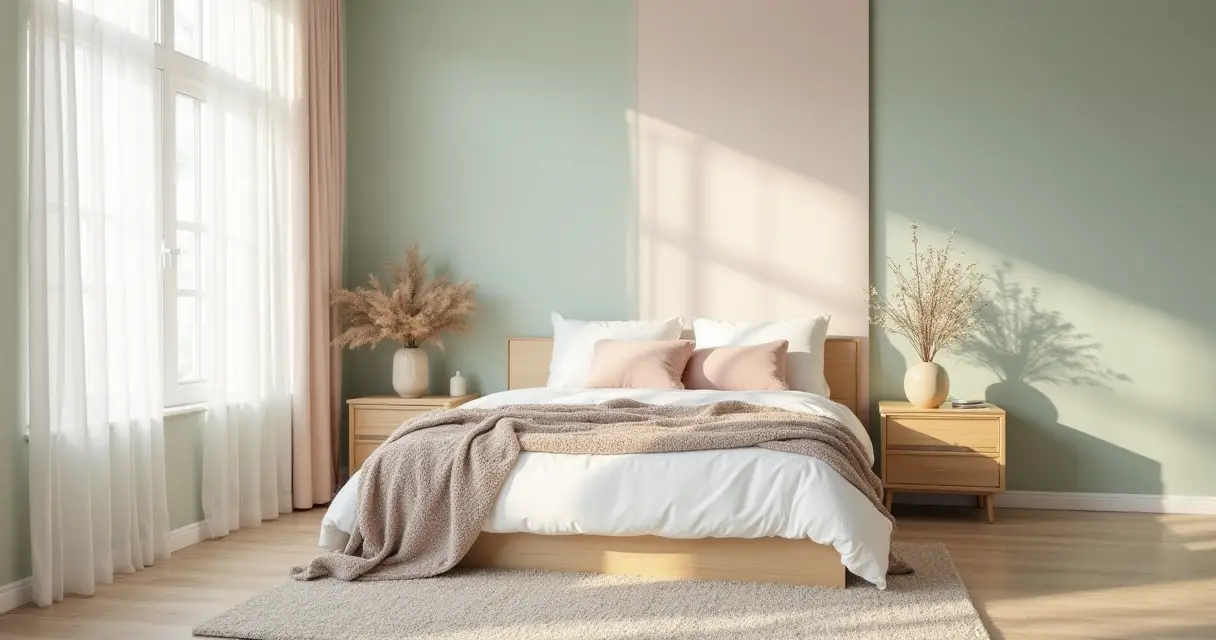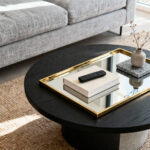Can we talk about why everyone gets “cute” wrong? It’s one of my biggest pet peeves in this industry. People hear the word and immediately think of a six-year-old’s birthday party: bubblegum pink walls, cheap glitter, and cartoon characters everywhere. That’s not cute; that’s kitsch. And it’s a missed opportunity.
“Cute,” when done right, is a sophisticated design language. It’s about softness, organic shapes, and creating a space that feels personal and protective. It’s about crafting an environment that lowers your blood pressure the second you walk in. But achieving that effect isn’t about just throwing adorable things in a room. It’s about precision. It’s about understanding how light, texture, and scale work together to create a specific feeling. So, forget the corporate speak and the fluffy blog posts. This is how you actually build a charming, sophisticated, and genuinely cute space.
Crafting Your Cute Bedroom Foundation
Everything starts with the bones of the room. Get this part wrong, and you’ll be fighting an uphill battle, trying to fix a bad foundation with decorative pillows. We’re going to build a solid base by controlling the two most powerful elements in any space: color and light.
1. Opt for Soft Pastel or Warm Neutral Hues
The single biggest mistake people make is choosing a color without understanding its properties. They pick a soft pink and are shocked when it looks like Pepto Bismol under their cheap LED bulbs. The key isn’t just the color; it’s the quality of the color. You need to think about two things: undertones and Light Reflectance Value (LRV). Warm undertones—creamy whites, beiges with a touch of yellow, or blushes with a hint of peach—are what create that enveloping, cozy feeling. The LRV tells you how much light a color reflects. A high LRV (think 60+) is your best friend in making a room feel airy and open, which is the bedrock of this aesthetic.
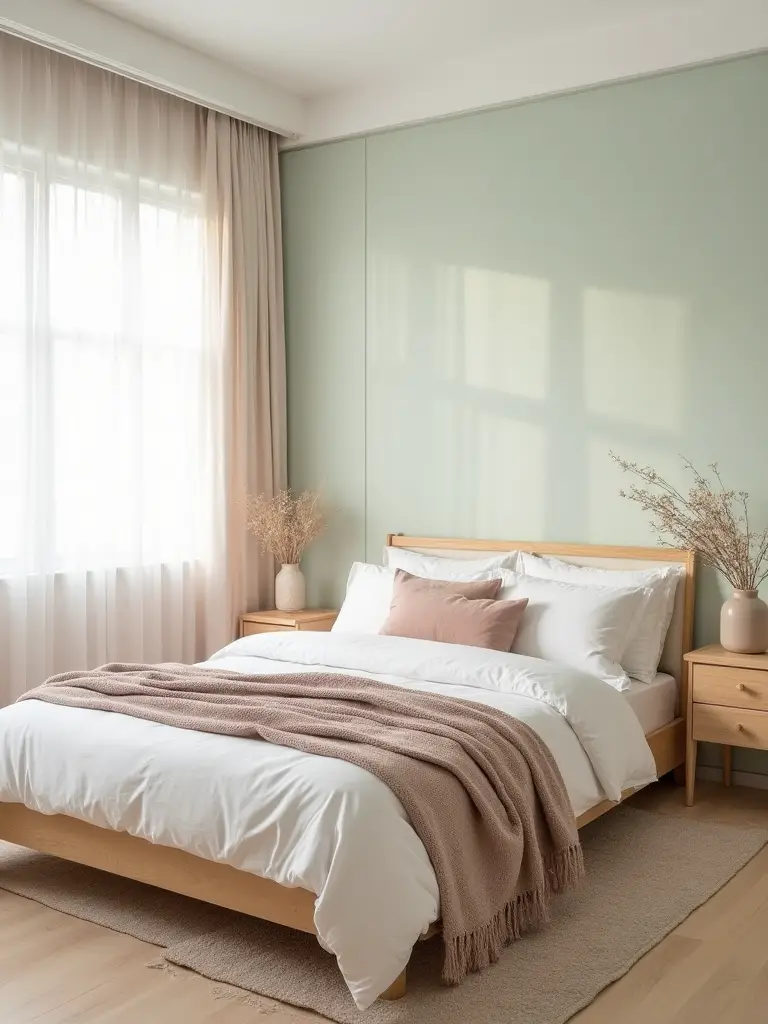
So, how do you pick the right one? Get samples. And I don’t mean those tiny 2×2 inch squares. Order large, peel-and-stick samples from a place like Samplize. Stick them on different walls and watch how they change throughout the day. A beautiful sage green that looks serene in the morning sun might look muddy and dull in the afternoon shade. You have to see the color in your light, in your space. This methodical step prevents the catastrophic “I have to repaint the entire room” moment that I’ve seen cost clients thousands.
From this carefully chosen canvas, you can begin to add layers of interest without creating chaos. The next logical step is pattern.
2. Integrate Charming Patterns Like Polka Dots or Stripes
Patterns are where a “cute” design can go off the rails fast. It’s easy to create visual chaos. The trick is to treat patterns like you would a team of specialists: they each have a distinct job. Don’t just throw them in a room and hope they get along. You need a hierarchy. Start with one primary, large-scale pattern—say, wide, subtle stripes on an accent wall or a duvet cover. This is your anchor.
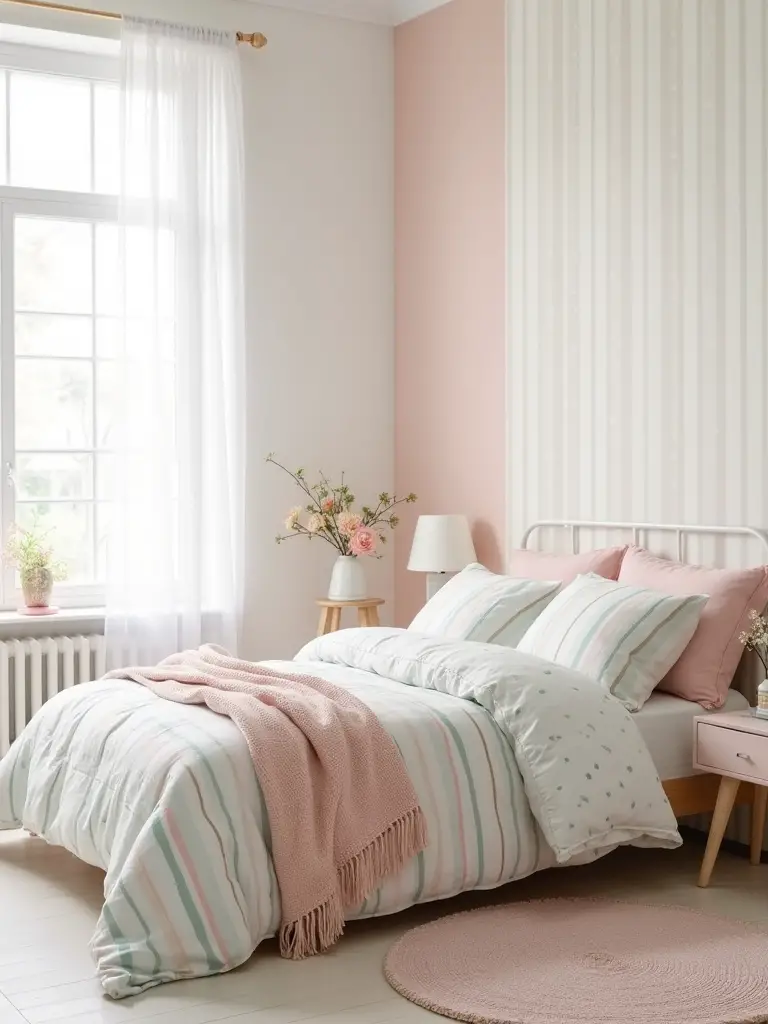
Then, introduce a secondary, smaller-scale pattern, like a small polka dot on pillowcases or a lampshade. The scale difference is crucial; it prevents the patterns from competing and making your eyes feel fuzzy. A third, even smaller or more textural pattern can be added in tiny doses. Remember the rule of thirds. It works in photography, and it works here. The point is control. The goal isn’t just to add a pattern; it’s to use that pattern to create rhythm and guide the eye without overwhelming the senses.
Once you have your foundational colors and patterns locked in, you can start thinking about how you’ll actually use the space. That brings us to zoning.
3. Dedicate a Cozy Corner for Reading and Relaxing
From a photographer’s perspective, a great room isn’t one big picture; it’s a collection of beautiful, smaller compositions, or vignettes. A dedicated cozy corner is exactly that. It’s about carving out a specific zone with a distinct purpose, which adds immense depth and function to the room. This isn’t just throwing a chair in a corner. It’s about building a scene. Find a spot, preferably with good natural light, and define it.
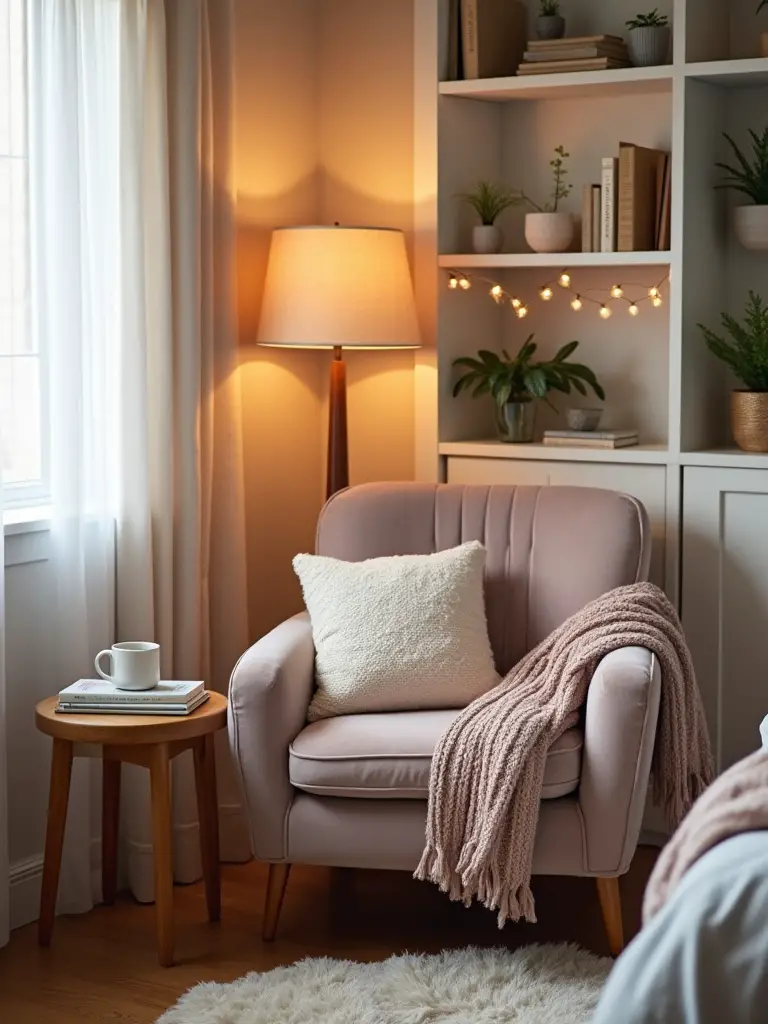
Start with the anchor piece: a comfortable chair with soft curves. Maybe it’s a plush armchair or a modern papasan. Then, add layers. An area rug under the chair visually separates it from the rest of the room. Task lighting is critical—a beautiful floor lamp that casts a warm, focused pool of light (look for a bulb around 2700K). Finally, add the details: a small table for a book and a cup of tea, a soft throw blanket. You’ve just created a story in that corner. It’s not just a place to sit; it’s an invitation to slow down.
Creating these little moments works best when they all tie back to a central idea, which is where your theme comes in.
4. Choose a Unifying Whimsical Theme for Cohesion
Let’s be clear: “theme” doesn’t mean plastering Tinkerbell on everything. A theme is your design brief. It’s the invisible thread that ties every choice together and prevents your room from looking like a random collection of stuff you bought at HomeGoods. It’s your North Star for every decision. Your theme could be “ethereal coastline” or “modern Scandinavian folklore” or “Japanese garden.” It’s an idea, not a cartoon.
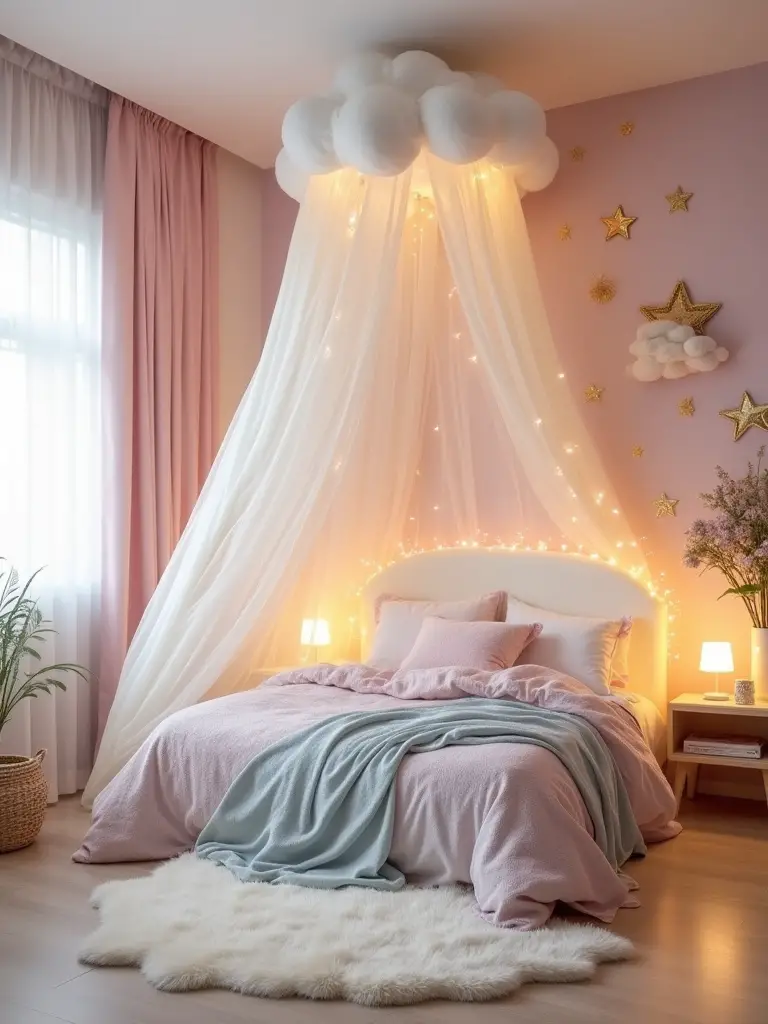
Once you have your theme, create a mood board. This is non-negotiable. Pin images, fabric swatches, and paint chips that fit your brief. This becomes your reference point. When you’re about to buy a new piece of furniture or decor, hold it up against the mood board. Does it fit the story? If not, put it down. This simple discipline is what separates a thoughtfully designed room from a cluttered one. It’s the shortcut to making a dozen disparate decisions feel like one cohesive vision.
That cohesive vision will be made or broken by the most important element in the room: light.
5. Maximize Natural Light to Brighten Your Space
As a photographer, I can tell you this with absolute certainty: light is everything. It sculpts space, renders color, and sets the mood. You can have the most beautiful furniture in the world, but in a poorly lit room, it will look flat and lifeless. Maximizing natural light is about more than just opening the blinds; it’s about actively managing and manipulating the light that enters your room.
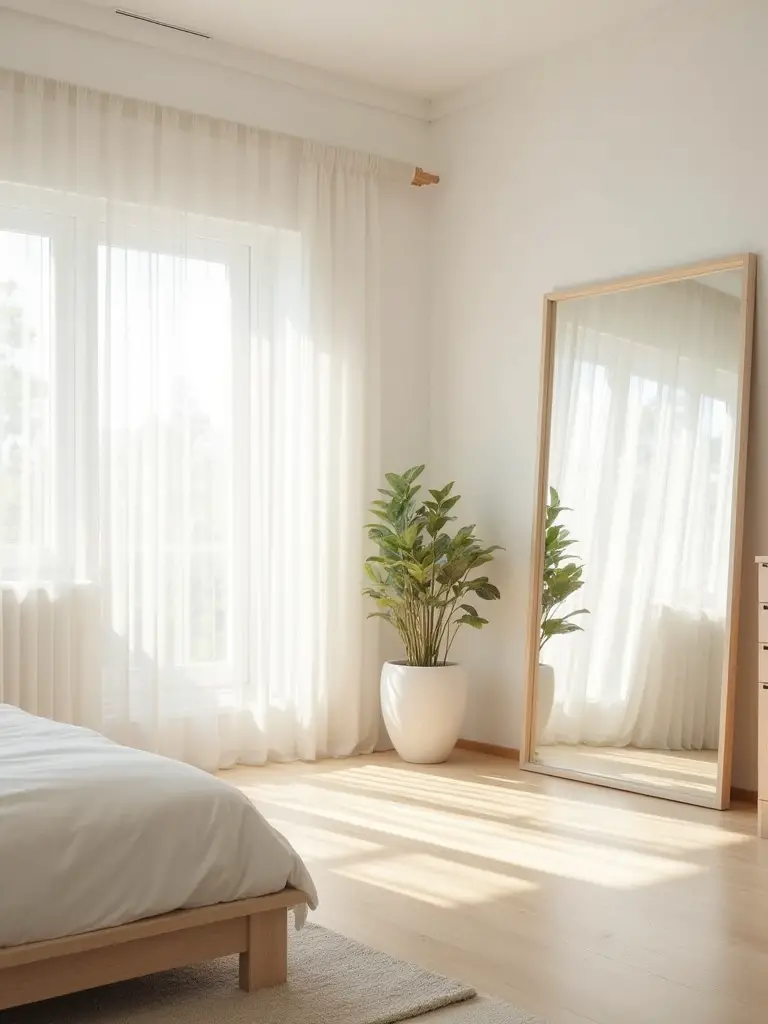
First, your window treatments. Ditch heavy, dark drapes. You want sheer, light-filtering curtains that diffuse sunlight. Diffusion is key—it turns harsh, direct rays into a soft, even glow that eliminates hard shadows and makes everything look better. Second, use mirrors. This is an old trick because it works. Placing a large mirror opposite a window will literally bounce light back into the room, effectively doubling your light source. And finally, think about finishes. Glossy or satin finishes on furniture, metallic accents, and even a slight sheen in your wall paint will reflect more light than matte surfaces. It’s a game of inches that adds up to a dramatically brighter space.
Adorable Furniture & Smart Storage Solutions
Furniture and storage aren’t just functional necessities; they’re the primary sculptural elements in your room. Their shape, material, and placement define the space and have a massive impact on the overall feel. Choose pieces that support the soft, charming aesthetic you’re building.
6. Select a Bed Frame with Delicate or Ornate Details
The bed is the protagonist of the room. Its frame dictates the entire aesthetic. For a “cute” or charming space, you want a frame that prioritizes silhouette over bulk. Think about negative space. A delicate wrought-iron frame with elegant curves allows you to see the wall behind it, making the room feel larger and more open. A heavy, solid sleigh bed does the opposite; it’s a visual block.
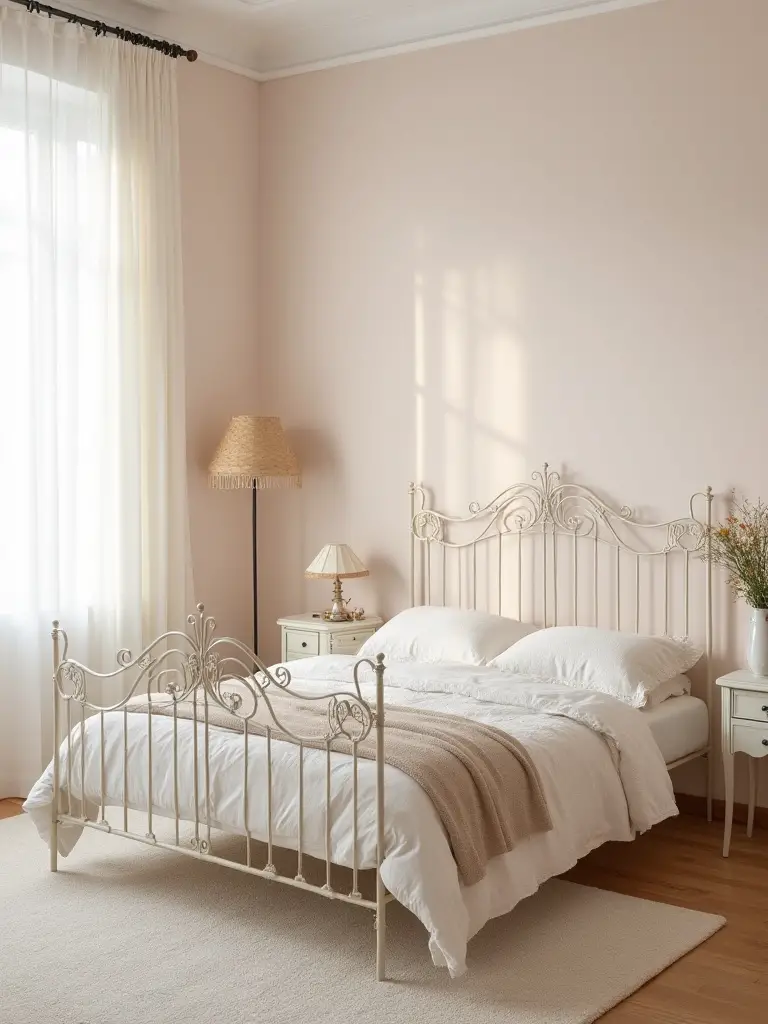
The detail is what tells the story. Spindles, subtle carvings, a gently arched headboard, or a classic button-tufted upholstered frame all contribute to a softer, more romantic feel. I once worked on a project where a client with a small bedroom swapped their bulky platform bed for a vintage-style brass frame. The room didn’t get any bigger, but it immediately felt lighter and more spacious. The frame became a piece of art, not just a piece of furniture.
That same principle of prioritizing soft forms applies to your other seating as well.
7. Incorporate Plush Seating like a Bean Bag or Pouf
Most rooms are filled with hard lines and right angles: the walls, the windows, the dressers. Introducing soft, unstructured shapes like a bean bag, a pouf, or an oversized floor cushion is a powerful way to break up that rigid geometry. These pieces are visually and physically inviting. They signal relaxation and comfort in a way a straight-backed chair never can.
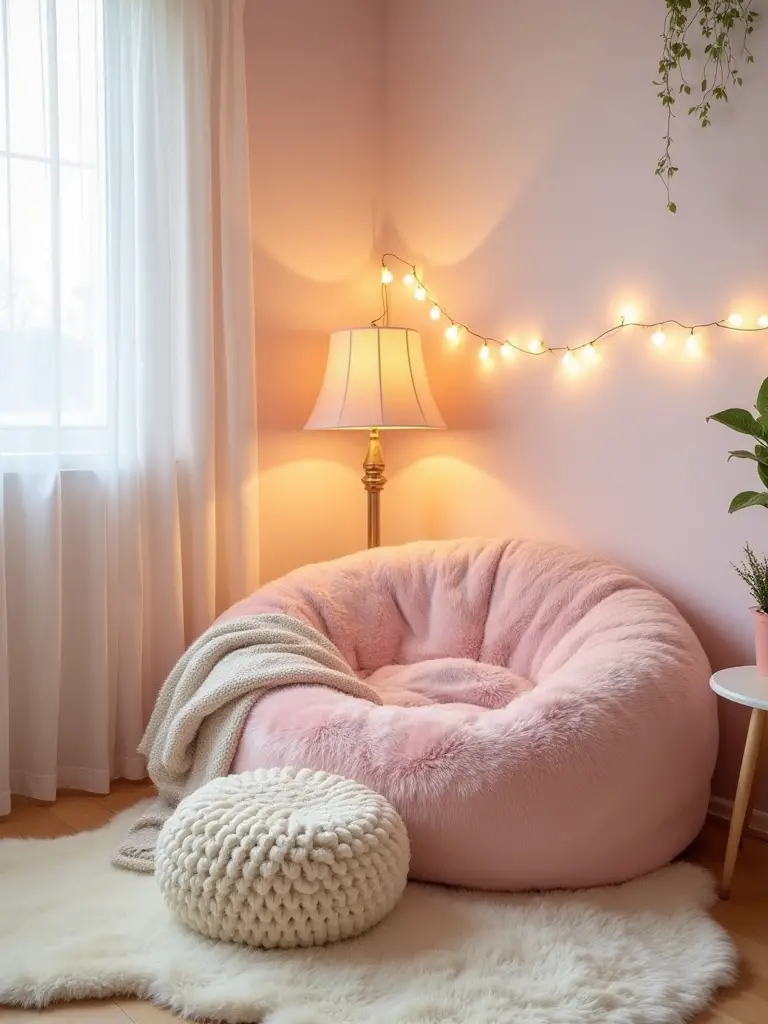
The key is to think of them as textural accents. A chunky knit pouf or a faux-fur bean bag adds a layer of tactile richness that elevates the whole space. Don’t relegate them to a kids’ room. In a sophisticated palette of creams, grays, or soft pastels, these pieces look incredibly chic. They provide flexible, low-profile seating that doesn’t obstruct sightlines, making them perfect for smaller rooms where every square foot counts.
Of course, all these soft things need a home. That’s where smart, decorative storage comes in.
8. Utilize Decorative Bins and Baskets for Storage
Clutter is the enemy of charm. Nothing kills a cute aesthetic faster than piles of stuff everywhere. The solution isn’t to become a minimalist monk; it’s to integrate storage that is part of the decor itself. Woven baskets, canvas bins, and lidded boxes aren’t just places to hide your junk—they are crucial textural elements.
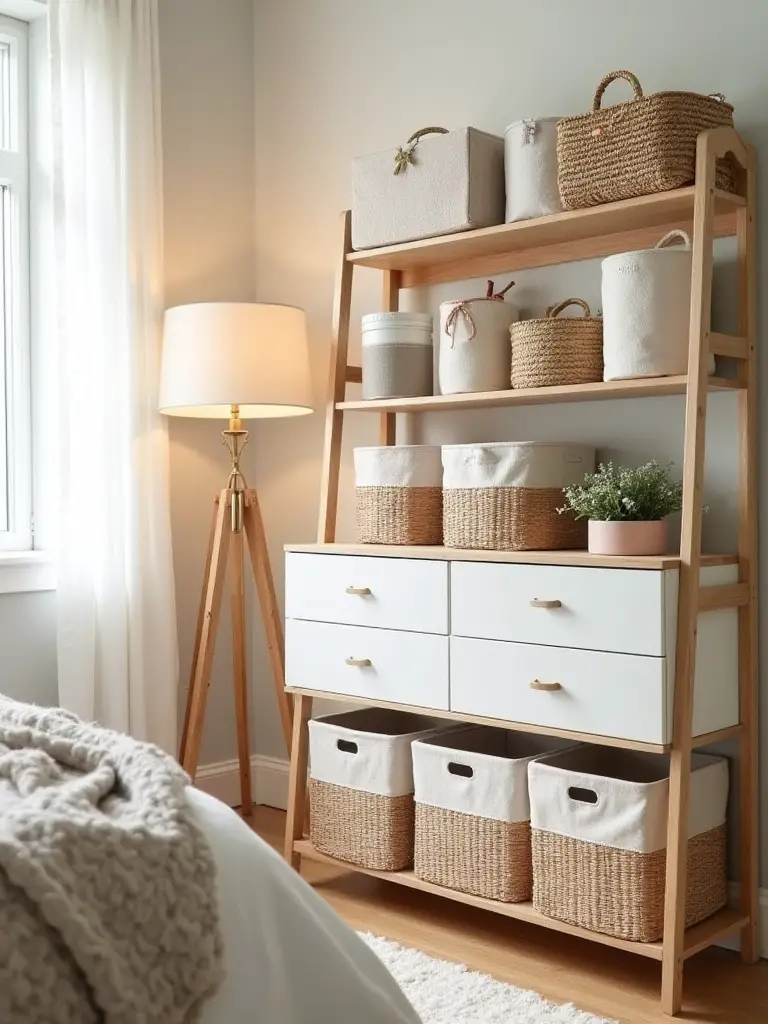
Group them. A trio of different-sized seagrass baskets in a corner adds a beautiful, organic texture while corralling everything from extra blankets to magazines. Use cloth bins on a bookshelf to contain smaller items, creating clean blocks of color and texture instead of visual noise. I learned this the hard way after photographing a stunningly decorated home that looked chaotic in photos because of surface clutter. Once we stashed everything in coordinated decorative bins, the design suddenly snapped into focus. It’s a shortcut to a polished look.
This idea of using materials to enhance the aesthetic extends to your main furniture pieces, too.
9. Choose Furniture with Curves or Light Wood Finishes
Our brains are hardwired to perceive curved lines as safer and more inviting than sharp, angular ones. That’s just psychology. You can use this to your advantage by choosing furniture with rounded corners, arched details, or cabriole legs. A round nightstand, a dresser with a scalloped edge—these details soften the entire room and create a more fluid, organic flow.
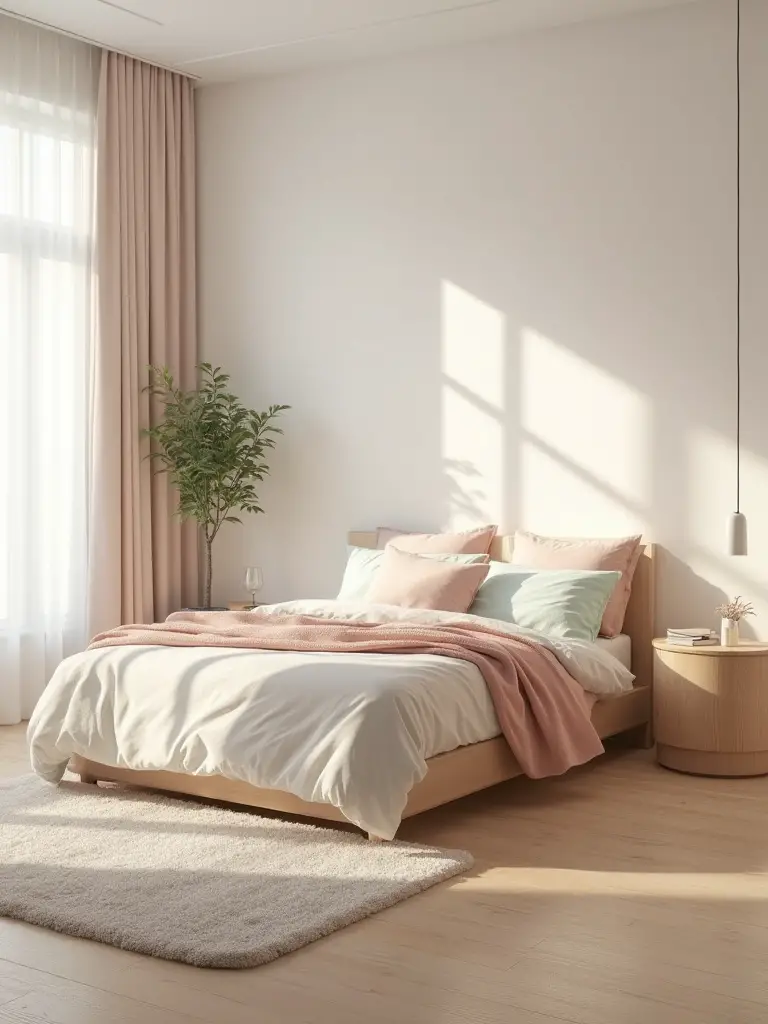
Combine those curves with light wood finishes. Woods like white oak, birch, or maple have a high Light Reflectance Value, meaning they bounce light around the room instead of absorbing it. This creates a bright, airy feel that’s central to this look. The combination of soft curves and light materials results in furniture that feels approachable and calming, reinforcing the entire foundation you’ve worked to build.
Weaving in Warmth with Textiles & Lighting
This is the part I love. We have the foundation and the structure. Now we get to layer in the elements that engage the senses—touch and sight—to create that final feeling of warmth and magic. This is all about controlling texture and mastering light.
10. Drape Fairy Lights for a Magical, Dreamy Glow
Forget the cheap, flashing rainbow lights from the dollar store. We’re talking about high-quality LED micro-lights on a delicate copper or silver wire. This is about creating a soft, ambient layer of light. The key specification to look for is color temperature. You want “warm white,” which is typically between 2700K and 3000K on the Kelvin scale. Anything higher will start to look blue and sterile, killing the cozy vibe instantly.
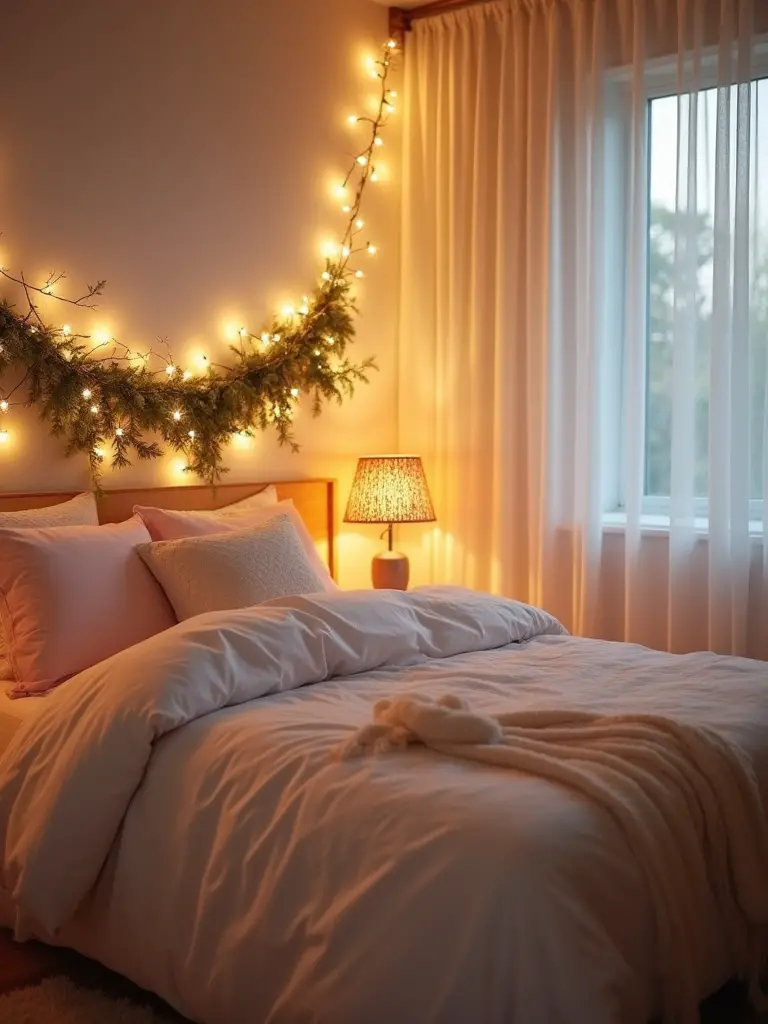
Think of them as a tool for highlighting features. Drape them behind a sheer curtain to create a diffuse wall of light. Wind them around a headboard to frame the bed. Bunch them inside a glass cloche on a dresser to create a magical little lantern. They shouldn’t be the primary light source; they are the final, delicate touch that adds depth and a sense of enchantment. It’s the lighting equivalent of a whisper.
Just as light needs to be layered, so does texture. That’s our next step.
11. Layer Soft Textures with Plush Throws and Rugs
A room without varied textures is visually flat and uninteresting. From a photographer’s standpoint, it’s boring. Layering textiles is how you create depth, warmth, and an irresistible desire to touch everything. This isn’t just about piling on blankets; it’s a deliberate combination of different materials and weaves.
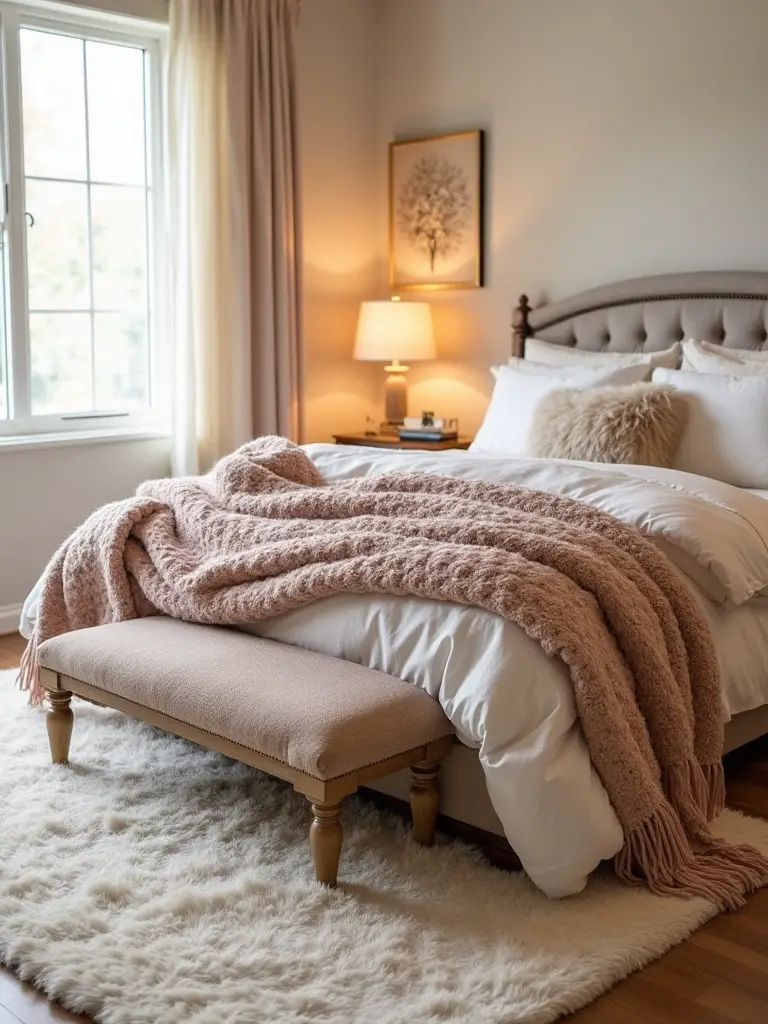
Start with a foundation rug to anchor the bed. Then, layer on the bed itself. You might have crisp linen sheets, a cotton percale duvet, a chunky wool knit throw, and maybe a velvet accent pillow. Notice the variety: smooth, crisp, nubby, plush. Each one reflects light differently and feels different to the touch. The same goes for rugs. A low-pile wool rug can be topped with a small, high-pile faux sheepskin right where your feet land in the morning. This is multi-sensory design. It makes a room feel as good as it looks.
That textural layering extends all the way to your windows.
12. Hang Sheer Curtains to Diffuse Sunlight Beautifully
Sheer curtains are one of the most effective and affordable tools for light modification you can own. They are a photographer’s secret weapon. Their job is to take harsh, direct sunlight—which creates high contrast and sharp shadows—and diffuse it. A diffuser scatters the light, spreading it evenly and wrapping it around objects for a soft, flattering glow. This is why everything looks better in a room with sheers.
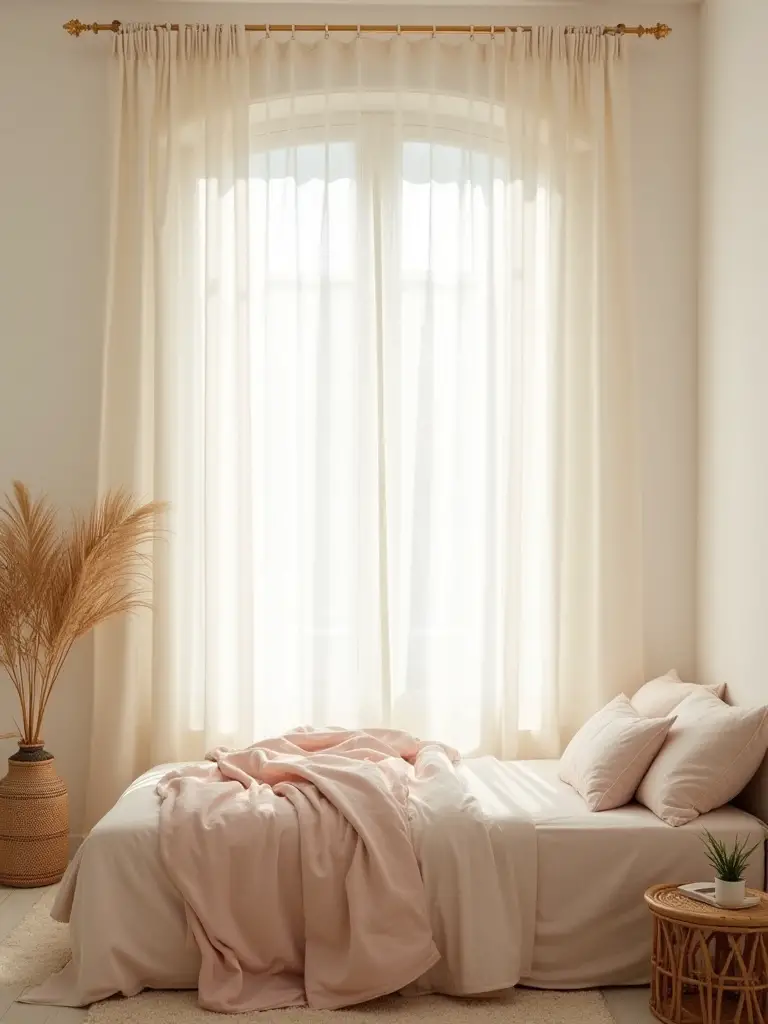
For maximum effect, hang them high and wide. Mount the curtain rod at least 4-6 inches above the window frame and extend it 6-12 inches on either side. This tricks the eye into seeing a larger window and a taller ceiling. I often recommend pairing them with blackout blinds or a secondary set of heavier drapes on a double rod. This gives you the best of both worlds: beautiful, soft light during the day and complete darkness for sleep.
Whimsical Details & Personal Charm
This is where you make the space unequivocally yours. The foundation is set, the main pieces are in place. Now, we add the final 10%—the art, the objects, the details that tell your personal story.
13. Adorn Walls with Cute Artwork or Photo Displays
Empty walls are a wasted opportunity. But please, don’t just stick a single, tiny frame in the middle of a vast wall. Think about composition and scale. A gallery wall is a great solution because it allows you to group smaller pieces to create one large, impactful statement. The trick is to lay it all out on the floor first. Arrange your frames until you have a composition that feels balanced.

A shortcut I learned long ago: maintain consistent spacing between all the frames—about 2-3 inches is a good rule of thumb. This creates a sense of order and makes the collection feel intentional, not chaotic. And don’t just use framed photos. Mix in different textures and shapes: a small mirror, a pressed-flower frame, or a beautiful postcard. It adds rhythm and keeps the eye moving.
Those visual notes of personality should extend from the walls to the furniture itself.
14. Scatter Themed Accent Pillows on Beds and Seating
Accent pillows are the easiest, most affordable way to inject color, pattern, and shape into a room. The operative word here is “accent.” Less is often more. The goal is a curated collection, not a dragon’s hoard of pillows you have to excavate every night just to get into bed.
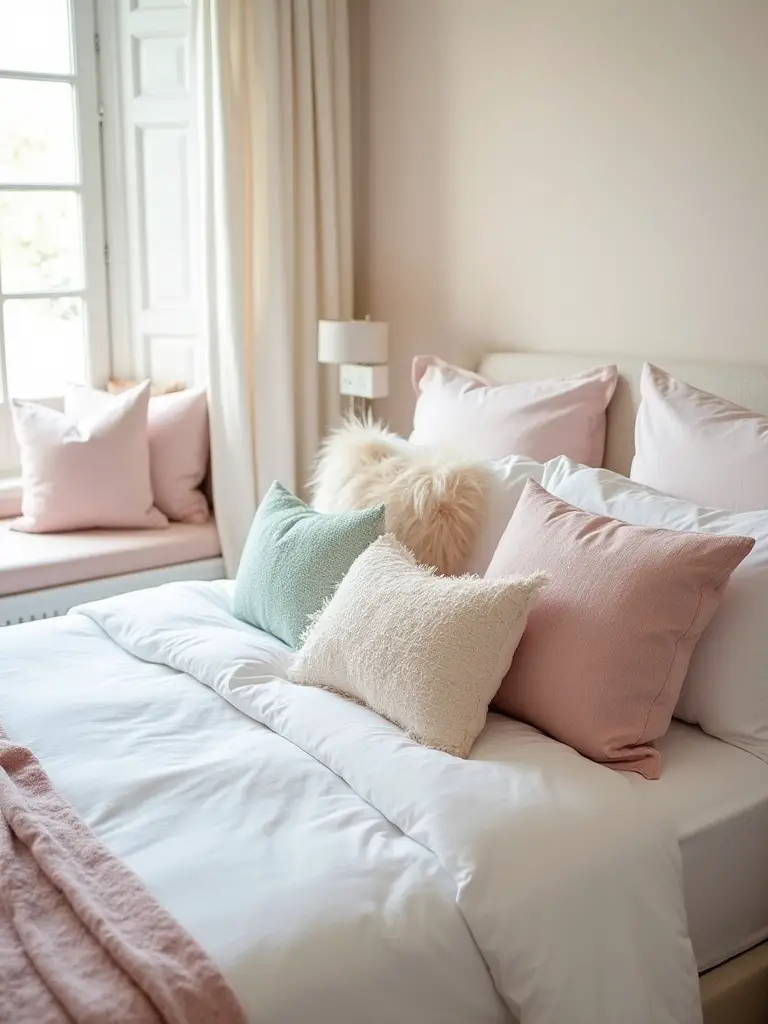
Follow the designer’s rule of odds: arrange pillows in groups of three or five for a more dynamic, less formal look. Vary the shapes and sizes. On a bed, you might have two large square euros, two standard shams, and one interesting lumbar or round pillow in front. It’s about creating a layered composition. And always, always buy inserts that are one size larger than the cover. A 20×20 inch cover needs a 22×22 inch insert to look full and plush, not sad and limp.
To complement these soft elements, we need to introduce something with life.
15. Incorporate Small Potted Plants or Succulents
Every room needs something alive in it. Plants add an organic element that manufactured decor simply can’t replicate. The organic shapes of their leaves and stems provide a beautiful, natural contrast to the straight lines of the room’s architecture. For a “cute” aesthetic, focus on plants with soft, rounded leaves or interesting shapes.
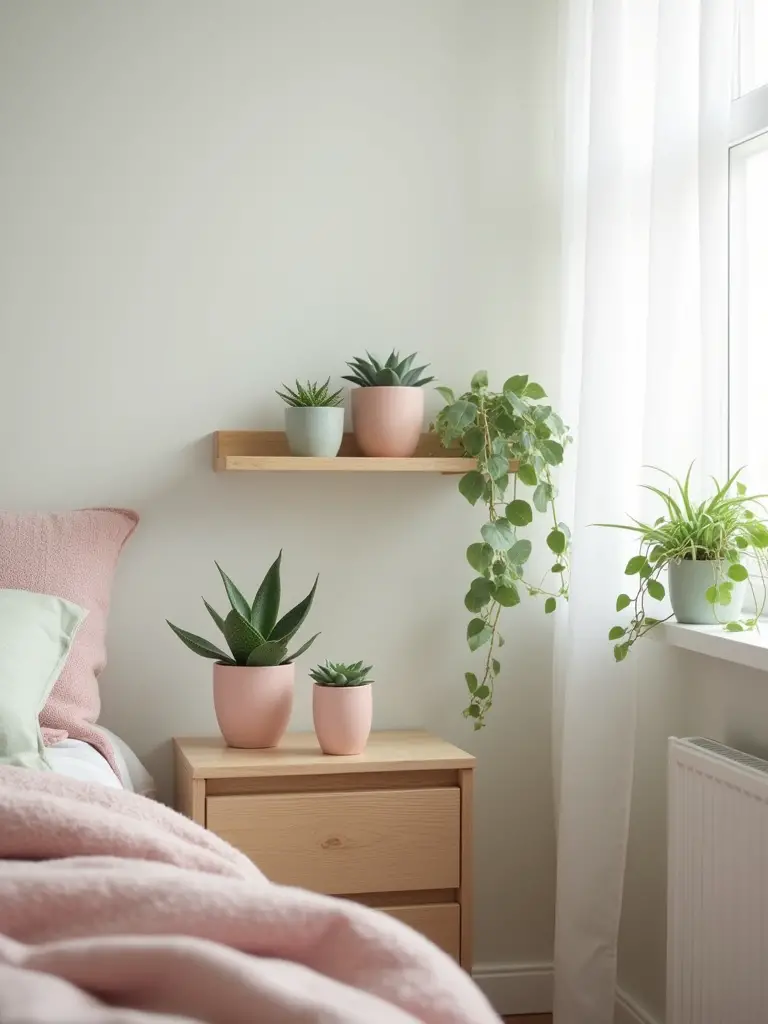
Don’t just stick a plastic pot on your windowsill. The container is half the design. Choose planters that complement your color scheme and add a textural element, like a ceramic pot with a subtle pattern or a classic terracotta pot that will develop a beautiful patina over time. Grouping smaller plants in a “plant gang” of two or three on a dresser or shelf creates a stronger visual impact than scattering single plants around the room.
From living things to cherished objects, let’s talk about those plush companions.
16. Display Adorable Stuffed Animals Artfully
I know what you’re thinking, but hear me out. A cherished stuffed animal doesn’t have to look childish if it’s displayed with intent. The key is to treat it as a sculptural object, not a toy. This isn’t about having a mountain of them on your bed. It’s about curating a select few and giving them a place of honor.
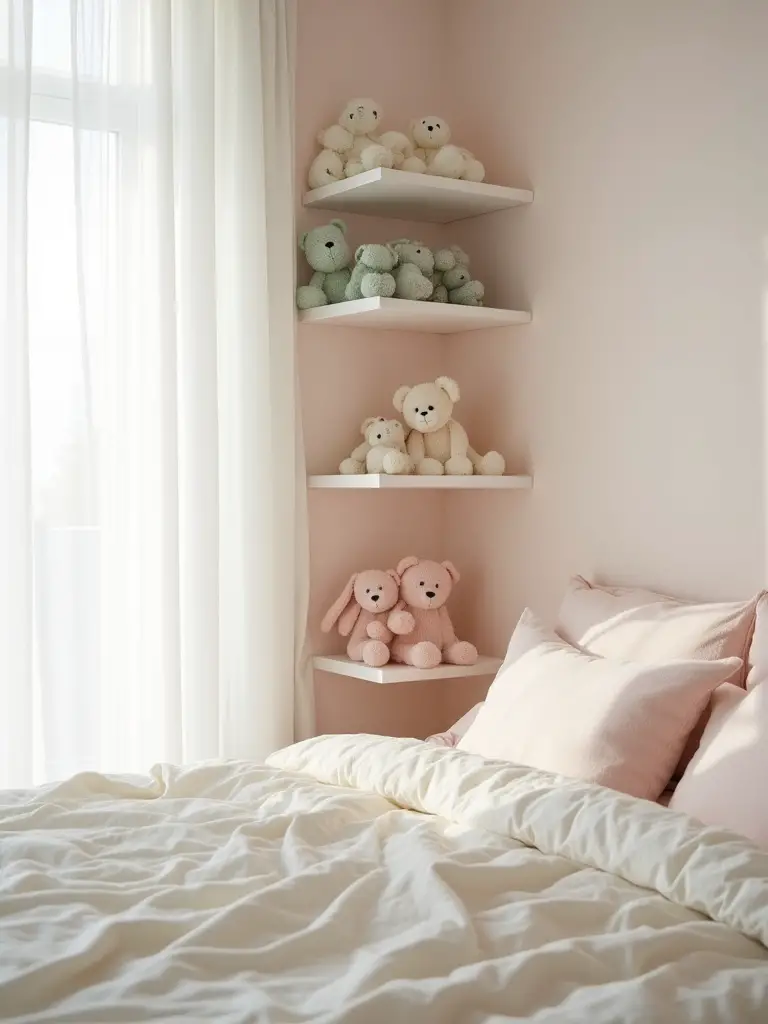
Place a single, beautifully made plush animal on a floating shelf, as if it were a piece of art. Nestle one in a cozy reading chair. It becomes an intentional, charming detail that adds a layer of softness and personal history to the room. When I photographed a very minimalist, chic apartment for a design magazine, the homeowner had a single, vintage Steiff teddy bear sitting on a stack of art books on her nightstand. It was the most charming and humanizing detail in the entire home.
That idea of creating a special “place” for things is perfectly applied to your daily routines.
17. Set Up a Vanity with Vintage-Inspired Accessories
A vanity isn’t just a place to do your makeup; it’s a dedicated ritual space. It elevates a routine into a moment of self-care. Choose a small desk or console table that fits the scale of your room and pair it with a beautiful mirror. The magic, however, is in the accessories.
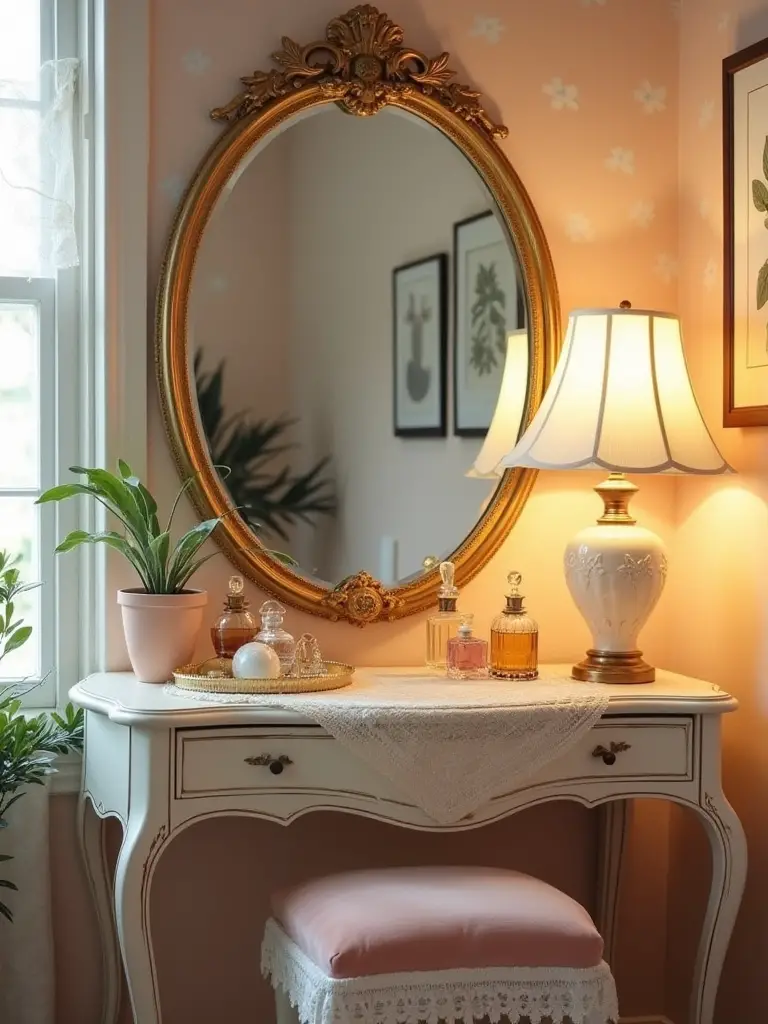
Scour thrift stores and flea markets for vintage-inspired pieces: an ornate silver tray to hold perfumes, small crystal dishes for jewelry, a milk glass vase for a single flower. These objects have a sense of history and soul that mass-produced plastic organizers lack. Good lighting is paramount here. Flank the mirror with two small lamps or sconces to provide even, flattering light. This creates a functional, beautiful vignette that adds a touch of old-world glamour.
Artistry isn’t just found in vintage items; it’s in handmade objects, too.
18. Hang a Dream Catcher or Macrame Wall Hanging
In a world of mass production, an artisanal, handmade object has incredible power. A macrame wall hanging or a delicately woven dream catcher introduces a rich, complex texture and a human touch that can soften an entire wall. It provides a focal point and breaks up the monotony of flat, painted surfaces.
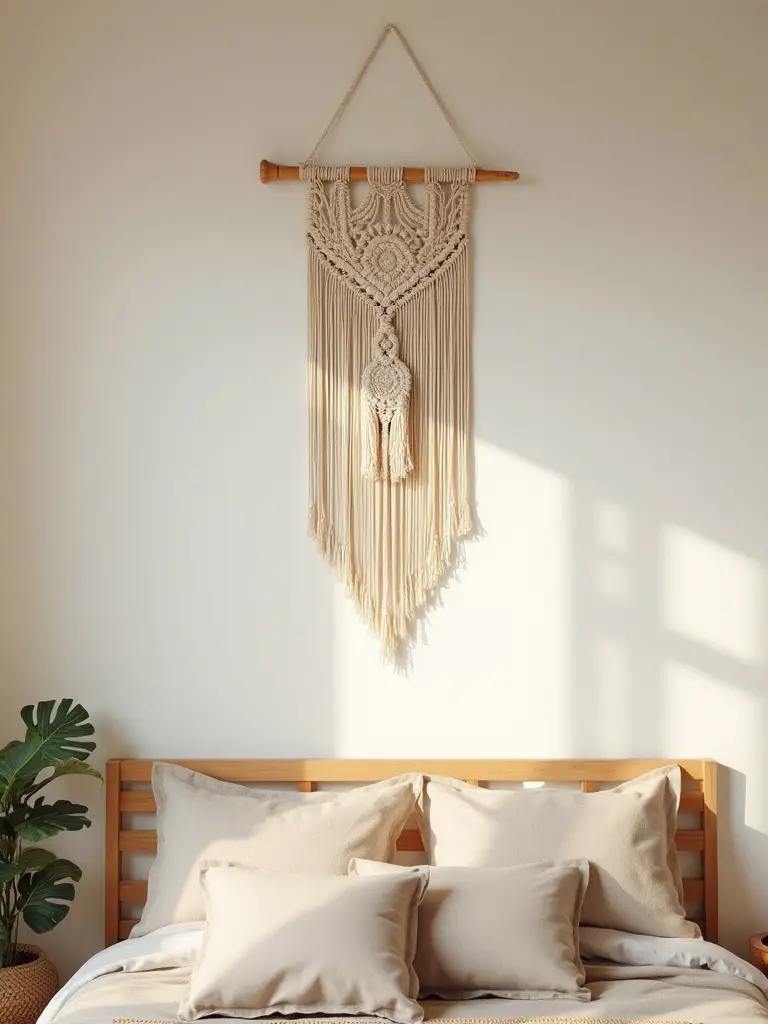
Pay attention to scale. A large macrame piece hung above the bed can serve as a de facto headboard, adding immense warmth and visual interest. Don’t be afraid to integrate it with other elements. I once saw a client weave delicate copper-wire fairy lights through a macrame hanging, and the effect at night was absolutely breathtaking. It turned a simple decorative object into a dynamic piece of art.
Finally, we have to address the most overlooked aspect of design: scent.
19. Place Scented Candles or Diffusers for Inviting Aromas
A room is an immersive experience. You see it, you feel it, and you should also smell it. Scent is directly tied to memory and emotion; it’s the invisible layer of design that makes a space truly feel like a sanctuary. A consistent, subtle, and pleasant aroma can make a room feel cleaner, cozier, and more welcoming.
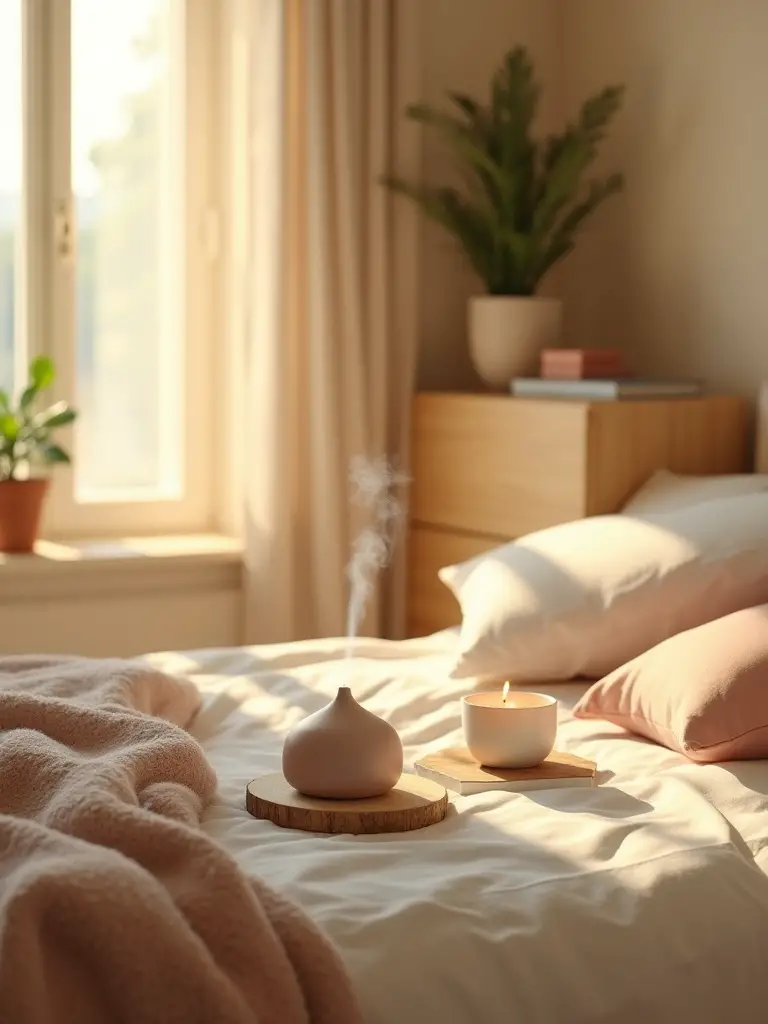
Choose a signature scent for your space. Don’t go overboard. You want a subtle hint, not a punch in the face. A reed diffuser is excellent for a consistent, low-maintenance scent, while a high-quality scented candle (look for soy or coconut wax for a cleaner burn) adds the bonus of a warm, flickering glow. I recommend calming scents like lavender, sandalwood, or chamomile for a bedroom to signal to your brain that this is a place for rest and relaxation.
Conclusion: Embrace Your Charming Haven
Creating a “cute” bedroom isn’t about following a juvenile trend. It’s a deliberate design exercise in crafting comfort. It’s about understanding that softness, warmth, and personality are created through the careful control of light, the thoughtful layering of texture, and the precise selection of shapes and materials. It’s a space built with intention.
You now have the technical and creative framework to build a room that is not just beautiful to look at, but restorative to be in. Start with one or two ideas that resonate with you and build from there. Ditch the idea that charming means childish. Instead, embrace it as the sophisticated, cozy, and deeply personal sanctuary you deserve. Your version of a perfect retreat is waiting—now go build it.
